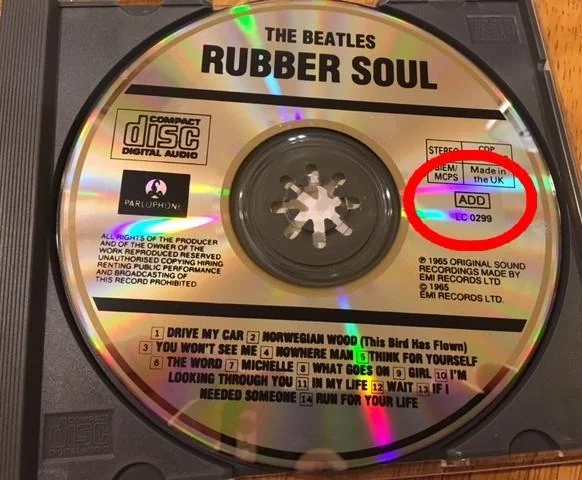In the audiophile world, few things can compare in importance to sound quality. In the digital age, where streaming services offer convenience but often sacrifice quality, true connoisseurs prefer physical media. That's why CDs are still an important part of audiophile culture. Today we're going to talk about AAD, ADD and DDD markings on CDs - these markings can tell you a lot about the process of album creation and, consequently, about the sound quality.
What do the markings AAD, ADD, DDD mean?
Those three magic letters on your CD cover are not just a set of symbols. They reflect the technological process of recording, processing and mastering audio material, each of which can be analog or digital. Let's break it down in more detail:
- AAD: This designation indicates that the original recording and processing was done using analog technology and the mastering was done using digital technology. This combination indicates that although the source material was recorded and processed in an analog manner, the final production of the disc took place in a digital environment.
- ADD: Here, the first stage (recording) was analog and the next two (processing and mastering) were digital. This labeling is often found on CDs released in the late 80's and early 90's when the industry began to actively go digital.
- DDD: All three stages of disk production took place in a digital environment. This recording assumes the clearest possible sound without the loss of quality that can occur with analog processing. DDD markings are most commonly found on more modern releases.
Why is it important?
The sound quality of a CD depends largely on the recording and mastering technology. Analog recording can add warmth to the sound, while digital recording provides clarity and fidelity. Understanding these processes helps audiophiles make an informed choice in favor of a particular album.
Does the labeling affect an audiophile's choice?
Yes, absolutely. Some people prefer analog recordings for their unique atmosphere and live sound. Others appreciate digital recordings for their superior clarity and fidelity. Knowing the labels allows music lovers to more accurately select albums that match their tastes.
Conclusion
The AAD, ADD and DDD labels are a bridge between the past and present of the music industry. They carry information about the technological process by which the album was created, and help audiophiles make the best sound quality choices. The next time you pick up a CD, pay attention to these small but important letters. They can tell you a lot about your favorite music.
And you can always choose an amplifier to your liking at the Papatube audio
